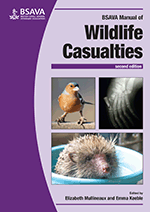
Full text loading...

There are small number of reptiles and amphibians indigenous to the British Isles, including grass snakes, slow worms, sand lizards, common frogs, natterjack toads and palmate newts, as well as some introduced species, such as the edible frog and red-eared terrapins. Veterinary surgeons may occasionally be presented with reptiles and amphibians that are sick or injured. This chapter covers: ecology and biology, anatomy and physiology; capture, handling and transportation; clinical assessment; first aid and hospitalization; anaesthesia and analgesia; specific conditions; therapeutics; husbandry; rearing of young reptiles and amphibians; rehabilitation and release; and legal considerations.
Reptiles and amphibians, Page 1 of 1
< Previous page | Next page > /docserver/preview/fulltext/10.22233/9781910443316/9781910443316.31-1.gif

Full text loading...










